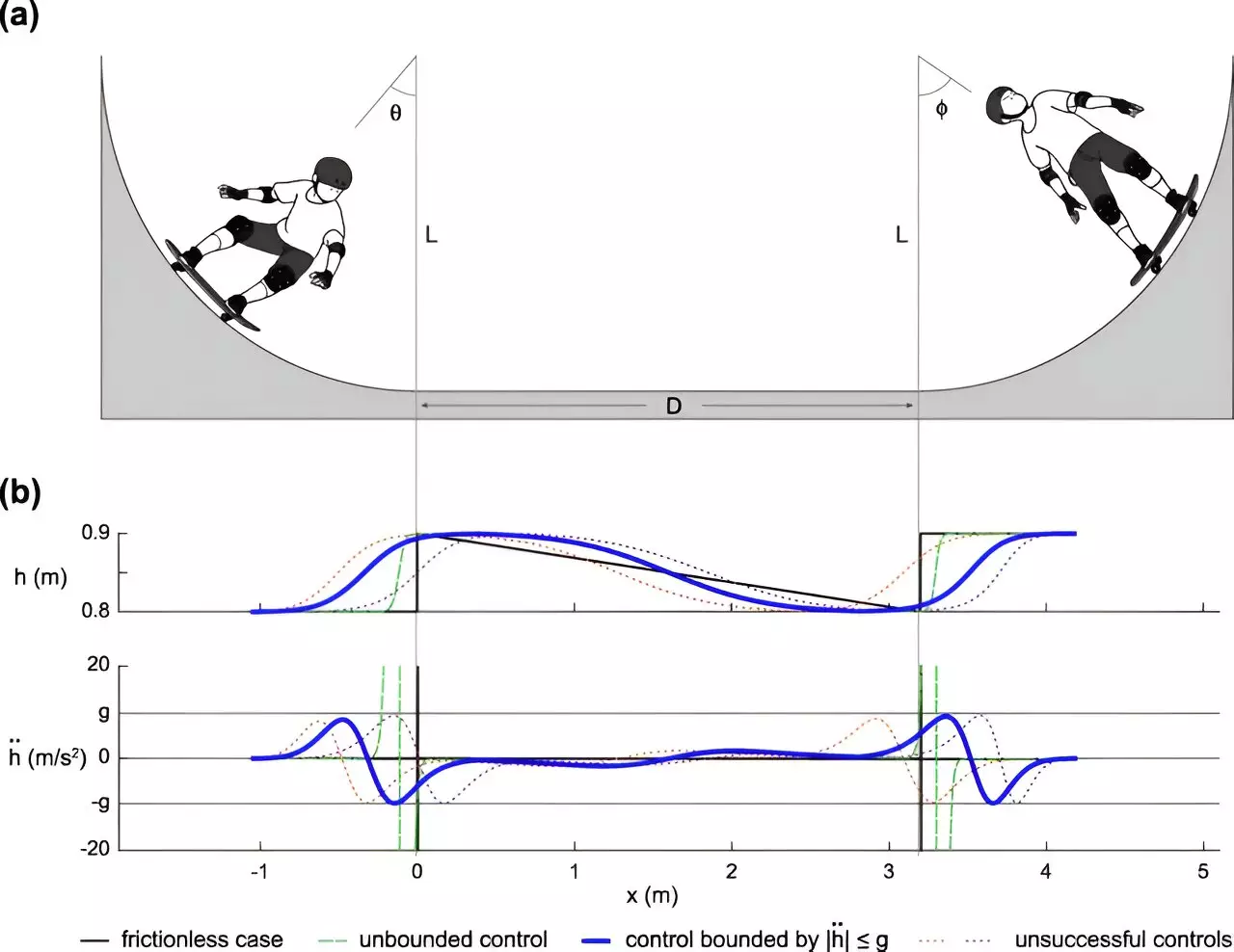A consortium of engineers and mathematicians from ETH Zürich, alongside researchers from The Institute of Statistical Mathematics and ATR Institute International in Japan, has made significant strides in understanding the physics governing skateboarding on half-pipes. Their study, which recently appeared in the esteemed journal Physical Review Research, draws upon a unique approach. By likening the motion of a skateboarder to that of a person swinging on a swing, they were able to create an innovative model that offers an intricate look at the pumping motion required for skateboarders to generate lift and maintain momentum while skating.
The Essence of the Half-Pipe
At its core, a half-pipe is a semi-cylindrical structure typically constructed from materials such as wood or concrete. It mimics the shape of a horizontally-sliced pipe, creating a valley configuration flanked by two steep ramps. For skaters, these ramps serve as launch pads for executing intricate maneuvers. The fundamental action begins with skating down one side, traversing the low point of the half-pipe, and ascending the opposing slope. However, to maintain speed and sustain their path through repeated runs, skaters must utilize a specific technique: “pumping.”
Pumping entails a series of coordinated movements where the skater crouches in the valley and then extends upwards as they approach the ramp’s curve. This dynamic interaction bears resemblance to the efforts of children striving to keep a swing in motion—an analogy that greatly assisted the research team in developing their model.
Merging Theory with Observation
The initial foundation of their research relied heavily on existing physics models of swings and pendulums. Yet, to address the complexities unique to skateboarding, the researchers meticulously analyzed real-world skateboarders through video footage. This observational data provided critical insights into how skateboarders modulate their mass in relation to the slope beneath them, including pivotal factors like the angle of the skateboard against the half-pipe. These modifications are essential, as they directly influence the skater’s ability to accelerate, perform tricks, and even achieve airborne moments.
Through this rigorous analytical approach, the team managed to integrate multiple elements that are characteristic of the skateboarding experience, crafting a model that encapsulates its kinetic nuances.
Once the model was fully developed, the researchers employed it to identify the most effective pumping techniques. They uncovered optimized strategies that could theoretically enhance a skater’s performance on the half-pipe. However, one notable limitation became apparent: the model’s recommendations, while theoretically sound, would realistically hurl the skater off the ramp in a manner that defied practical execution. This paradox highlights the inherent challenge in applying theoretical physics to dynamic, real-world scenarios.
Although the optimal pump suggested by the model would not be suitable for actual skating, it provides a fascinating glimpse into the mechanics of motion and acceleration, underscoring the complexities of balancing forces at play in extreme sports.
The researchers also propose that their model holds promise beyond the realm of sports. They speculate that the insights gained could assist in developing advanced algorithms for robotic systems, particularly those that need to navigate varying terrains. By emulating the balance and motion exhibited by a skateboarder on a half-pipe, robots might gain improved abilities to traverse uneven surfaces while maintaining equilibrium.
This research illustrates the intricate relationship between science and sports, showcasing how a deeper understanding of physics can lead to advancements in technology and techniques. The collaboration between disciplines not only enhances our grasp of athletic performance but also serves as a foundation for future innovations in robotics and beyond.
The study conducted by these researchers sheds light on the dynamic interplay of forces that define skateboarding maneuvers. Through innovative modeling techniques and careful observation, they have brought forth new knowledge that holds potential for multiple fields—demonstrating the profound impact of interdisciplinary research on sports science and engineering.


Leave a Reply